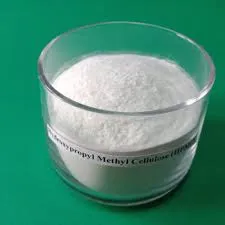
Čvc . 31, 2024 14:39 Back to list
Exploring the Various Applications of Hydroxypropyl Methyl Cellulose in Different Industries
The Versatile Uses of Hydroxypropyl Methyl Cellulose
Hydroxypropyl methyl cellulose (HPMC) is a cellulose-derived compound that has gained prominence in various industries due to its unique properties and versatility. As a non-toxic, biodegradable, and soluble polymer, HPMC has carved a niche for itself in food, pharmaceuticals, cosmetics, and construction. Understanding the applications of HPMC can provide insight into why it has become an essential component in these sectors.
Pharmaceutical Applications
In the pharmaceutical industry, HPMC is primarily used as an excipient. Its ability to form gels and films makes it an ideal candidate for drug formulation. HPMC is commonly utilized as a controlled-release agent, providing a controlled release of active ingredients over time. This characteristic not only improves the efficacy of medication but also enhances patient compliance due to less frequent dosing. Additionally, HPMC is used in ophthalmic solutions and tablets, where it acts as a thickening and stabilizing agent, helping to improve the viscosity and solubility of solutions.
Food Industry Applications
In the food industry, HPMC serves multiple functions ranging from a food additive to a stabilizer. It is often used in gluten-free baking as a binding agent, helping to enhance the texture and moisture retention of baked goods. HPMC improves the sensory qualities of food products, contributing to their mouthfeel and overall palatability. Moreover, it serves as an emulsifier in salad dressings and sauces, allowing for uniform distribution of ingredients, thus maintaining stability and preventing separation.
hydroxypropyl methyl cellulose uses

Cosmetic Uses
The cosmetic industry also benefits from the properties of HPMC. It is commonly found in creams, lotions, and gels, providing a smooth texture and enhancing the spreadability of products. HPMC acts as a thickening agent, improving the viscosity of formulations and helping to stabilize emulsions. Its binding properties allow it to hold moisture, making it an effective ingredient in moisturizing products. Furthermore, HPMC is valued for its safety profile, making it suitable for sensitive skin applications.
Construction Industry Applications
The construction industry has embraced HPMC for its performance-enhancing properties in cementitious materials. It is an essential ingredient in tile adhesives, plasters, and renderings, where it acts as a water-retaining agent. By improving workability and extending open time, HPMC makes it easier for construction professionals to apply materials without compromising adhesion or setting times. Its ability to enhance the flow and consistency of construction materials results in stronger, more durable applications.
Conclusion
The wide range of applications for hydroxypropyl methyl cellulose underscores its significance across various industries. From improving drug formulations in healthcare to enhancing food products and stabilizing cosmetic formulations, HPMC has proven itself to be a versatile and valuable compound. As demand for sustainable and effective ingredients continues to grow, HPMC is likely to remain a staple in formulation processes, driving innovation and ensuring the delivery of high-quality products. Whether it's in creating healthier food options or developing effective pharmaceutical solutions, the role of HPMC is indispensable in contemporary manufacturing practices.
-
Versatile Hpmc Uses in Different Industries
NewsJun.19,2025
-
Redispersible Powder's Role in Enhancing Durability of Construction Products
NewsJun.19,2025
-
Hydroxyethyl Cellulose Applications Driving Green Industrial Processes
NewsJun.19,2025
-
Exploring Different Redispersible Polymer Powder
NewsJun.19,2025
-
Choosing the Right Mortar Bonding Agent
NewsJun.19,2025
-
Applications and Significance of China Hpmc in Modern Industries
NewsJun.19,2025







